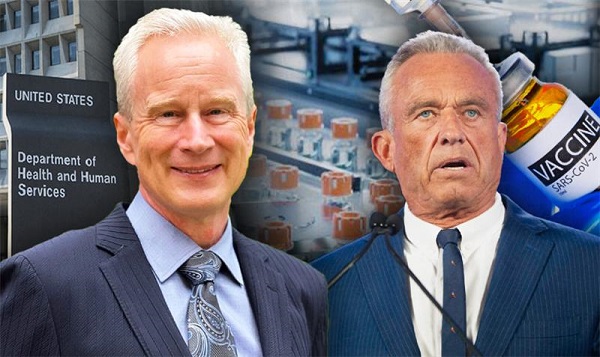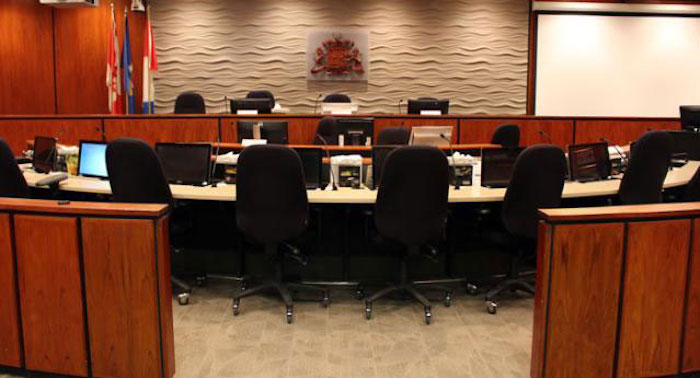Crime
RCMP make arrest after studying video(s) from first of two recent demonstrations in Red Deer

From Red Deer RCMP
Red Deer RCMP asking for witnesses regarding alleged assault at demonstration – Update
Further investigation of the Sept. 22, 2020, video that surfaced online has been completed by the Red Deer RCMP General Investigation Section (GIS).
This investigation has brought to light that on Sept. 20, 2020, the incident that is shown on the video occurred during the protest and RCMP members at the scene responded within seconds. The parties were then separated and assistance was offered to the victim. Both parties were identified; however, due to the growing concern that tensions were escalating within the crowd, the parties were permitted to disperse.
As per the background below, a video of a second incident was brought to the Alberta RCMP’s attention via social media on Sept. 21, 2020, and as a result, Red Deer RCMP opened an investigation that was completed by Red Deer RCMP GIS. The Red Deer RCMP GIS’s investigation into this incident involved the review of a large quantity of video evidence and conducting a large number of witness interviews.
As a result of this complex investigation, Red Deer GIS have reviewed dozens of videos from various angles and points of view to determine what criminal offences have taken place. Based on the information that has been reviewed at this time, RCMP have identified three separate criminal incidents that took place at the demonstration on Sept. 20, 2020. The first incident is that which is mentioned in the background below that occurred prior to police arrival at the demonstration. A second involved the incident that was captured on the video mentioned above during the demonstration that was brought to the attention of Alberta RCMP via social media on Sept. 21, 2020. A third incident was uncovered by the RCMP investigation, was supported by video evidence and remains under investigation. Red Deer RCMP GIS continue to review video evidence in an effort to uncover any other criminal incidents that may have taken place at the Sept. 20, 2020, event.
Trevor Lyle Roy (42) of Penhold, Alta. has been charged with assault in relation to the first incident that occurred on Sept. 20, 2020, and he is scheduled to attend Red Deer Provincial Court on Nov. 17, 2020.
The Red Deer RCMP GIS have requested a summons charging an individual with assault with a weapon in relation to the second incident that occurred on Sept. 20, 2020. Until the summons has been issued by the courts and subsequently served, the name of the accused cannot be released. Once that information becomes available, an update will be issued.
The Red Deer RCMP would like to thank all those who were cooperative with their investigation by providing statements and video evidence.
Background:
Sept. 22, 2020
Red Deer RCMP asking for witnesses regarding alleged assault at demonstration
Red Deer, Alta. – On Sept. 20, 2020, Red Deer RCMP attended a scheduled anti-racism demonstration at Rotary Recreation Park. As demonstrators were setting up for the event and prior to RCMP arriving for their planned attendance, a disturbance occurred between two separate demonstration groups, resulting in one male allegedly assaulting another. This incident was caught on video prior to Red Deer RCMP members arriving on scene and was shown to officers by those on scene.
Red Deer RCMP were aware of the planned demonstration and had prepared to have adequate resources and specially equipped officers at the event to handle any potential risks to public safety. After arriving on scene, members became aware of the alleged assault, were able to de-escalate the situation between the two groups and spoke with the victim.
A second incident was brought to the Alberta RCMP’s attention via social media on Sept. 21, 2020, and as a result, Red Deer RCMP opened an investigation that is being handled by Red Deer RCMP GIS. We are asking any witnesses to this incident to come forward with any information and contact Red Deer RCMP GIS at 403-406-2300.
“The Red Deer RCMP take this matter very seriously,” says Superintendent Gerald Grobmeier, Officer in Charge of Red Deer RCMP. “The role of the RCMP at demonstrations is to keep the peace and allow individuals their democratic right to gather. The matter remains under investigation.”
Business
Canada’s struggle against transnational crime & money laundering

From the Macdonald-Laurier Institute
By Alex Dalziel and Jamie Ferrill
In this episode of the Macdonald-Laurier Institute’s Inside Policy Talks podcast, Senior Fellow and National Security Project Lead Alex Dalziel explores the underreported issue of trade-based money laundering (TBML) with Dr. Jamie Ferrill, the head of financial crime studies at Charles Sturt University in Canberra, Australia and a former Canada Border Services Agency officer.
The discussion focuses on how organized crime groups use global trade transactions to disguise illicit proceeds and the threat this presents to the Canada’s trade relationship with the US and beyond.
Definition of TBML: Trade-based money laundering disguises criminal proceeds by moving value through trade transactions instead of transferring physical cash. Criminals (usually) exploit international trade by manipulating trade documents, engaging in phantom shipping, and altering invoices to disguise illicit funds as legitimate commerce, bypassing conventional financial scrutiny. As Dr. Ferrill explains, “we have dirty money that’s been generated through things like drug trafficking, human trafficking, arms trafficking, sex trafficking, and that money needs to be cleaned in one way or another. Trade is one of the ways that that’s done.”
A Pervasive Problem: TBML is challenging to detect due to the vast scale and complexity of global trade, making it an attractive channel for organized crime groups. Although global estimates are imprecise, the Financial Action Task Force and The United Nations Office on Drugs and Crime (UNODC) suggests 2-5% of GDP could be tied to money laundering, representing trillions of dollars annually. In Canada, this could mean over $70 billion in potentially laundered funds each year. Despite the scope of TBML, Canada has seen no successful prosecutions for criminal money laundering through trade, highlighting significant gaps in identifying, investigating and prosecuting these complex cases.
Canada’s Vulnerabilities: Along with the sheer volume and complexity of global trade, Canada’s vulnerabilities stem from gaps in anti-money laundering regulation, particularly in high-risk sectors like real estate, luxury goods, and legal services, where criminals exploit weak oversight. Global trade exemplifies the vulnerabilities in oversight, where gaps and limited controls create substantial opportunities for money laundering. A lack of comprehensive export controls also limits Canada’s ability to monitor goods leaving the country effectively. Dr. Ferrill notes that “If we’re seen as this weak link in the process, that’s going to have significant implications on trade partnerships,” underscoring the potential political risks to bilateral trade if Canada fails to address these issues.
International and Private Sector Cooperation: Combating TBML effectively requires strong international cooperation, particularly between Canada and key trade partners like the U.S. The private sector—including freight forwarders, customs brokers, and financial institutions—plays a crucial role in spotting suspicious activities along the supply chain. As Dr. Ferrill emphasizes, “Canada and the U.S. can definitely work together more efficiently and effectively to share and then come up with some better strategies,” pointing to the need for increased collaboration to strengthen oversight and disrupt these transnational crime networks.
Looking to further understand the threat of transnational organized crime to Canada’s borders?
Check out Inside Policy Talks recent podcasts with Christian Leuprecht, Todd Hataley and Alan Bersin.
To learn more about Dr. Ferrill’s research on TBML, check out her chapter in Dirty Money: Financial Crime in Canada.
Crime
Trudeau’s pro-transgender regime is a get-out-of-jail-free card for Canada’s most violent criminals

From LifeSiteNews
Canada’s most dangerous criminals are being sent to women’s prisons simply by identifying as such. This can only happen because the country is run by people like Justin Trudeau, who believes gender ideology with every fibre of his being.
You’ve probably heard plenty from Justin Trudeau and his progressive clones about conservative premiers “attacking” and “targeting” the so-called “LGBT community” for legislation protecting children from sex change surgeries. But you won’t hear a word about the victims of LGBT ideology – and you won’t hear a thing about the growing list of insanities inflicted on Canada by the policies they have passed and supported.
Consider the case of Adam Laboucan, who as a teenager brutally raped a 3-month-old infant and allegedly drowned a toddler – he was convicted only of the violent pedophilic assault, because he was less than 12 years old when he drowned the 3-year-old boy, and under Canadian law you must be at least 12 to be prosecuted.
Laboucan’s case – which LifeSiteNews reported on last year – was so disturbing that he became Canada’s “youngest designated dangerous offender.”
Now, according to The Canadian Press, Laboucan is “seeking escorted leave from prison to attend Indigenous cultural ceremonies in Vancouver.” You see, Adam Laboucan has changed his name. He is now known as Tara Desousa, and the CP obediently refers to him by his preferred pronouns, leading to ludicrous sentences such as this one:
Desousa, then named Adam Laboucan, was 15 years old in 1997 when she sexually assaulted an infant she was babysitting in Quesnel, B.C. The baby required surgery to repair the injuries.
Laboucan, of course, was not a woman when he attacked the infant and drowned the child. He is not a woman now, despite having obtained sex change surgeries since then (he is 43). He is considered so dangerous that B.C. Supreme Court Judge Victor Curtis imposed an indefinite sentence on him in 1999 because there was, in the view of the court, no foreseeable “time span in which Adam Laboucan may be cured.” The B.C. Court of Appeal affirmed the dangerous offender designation in 2002.
They did so for good reason. Expert psychiatrists stated that Laboucan exhibited everything from “transsexual to pedophilic tendencies.” He was given to self-mutilation and even self-cannibalism. He was promiscuous and volatile, threatening to kill a female guard and behaving so erratically that a 2010 parole review again affirmed his dangerous offender designation due to his problems with “gender identity, impulsive behavior, violence and sexual deviance.” But in 2018, he began to identify as a woman. As LifeSiteNews reported shortly thereafter:
In a 2021 brief to members of the House of Commons, incarcerated women’s rights advocate Heather Mason told a House Committee that numerous women prisoners had been subject to sexual harassment by males who call themselves females who are living in female prisons. Mason made special mention of Laboucan (Desousa) stating: “One of these women reported that while in the mother-child program, two transgender individuals with convictions for pedophilia, Madilyn Harks and Tara Desousa, would loiter near her and her child, making sexist and inappropriate antagonizing comments.” The person who calls himself Madilyn but was named Matthew has been labelled a serial pedophile with an “all-encompassing preoccupation in sexually abusing young girls.”
Note well: the reason one of Canada’s most dangerous criminals, a man with violent pedophilic impulses and a history of profound mental disturbance, can get sent to a women’s prison is because our country is run by people like Trudeau, who believes gender ideology with every fibre of his being.
Now, Laboucan – wearing his new female identity like a skin suit – has applied in Federal Court in Vancouver to attend a “healing centre for women” run by the Circles of Eagles Lodge Society, an Indigenous organization.
Laboucan’s most recent attempt at parole – in June 2024– was denied, with the Parole Board of Canada stating that that the victim of Laboucan’s assault and the family “have suffered pain, anxiety and anguish and long-term emotional impacts resulting from your offending. Each time you come up for parole, they are haunted by your offending and the damage you inflicted on their defenceless son/grandson.”
Of course, the government now expects you to believe that these crimes were committed by a woman – and the board did say that “escorted temporary absences” were “the next logical step in reintegration and gradual release,” despite the fact that he is “an undue risk to society.”
Laboucan’s Vancouver-based lawyer, Caroline North, declined to comment on the Federal Court application when asked by the Canadian Press.
-

 Brownstone Institute2 days ago
Brownstone Institute2 days agoThe Most Devastating Report So Far
-

 Business2 days ago
Business2 days agoCarbon tax bureaucracy costs taxpayers $800 million
-

 ESG1 day ago
ESG1 day agoCan’t afford Rent? Groceries for your kids? Trudeau says suck it up and pay the tax!
-

 Daily Caller1 day ago
Daily Caller1 day agoLos Angeles Passes ‘Sanctuary City’ Ordinance In Wake Of Trump’s Deportation Plan
-

 John Stossel1 day ago
John Stossel1 day agoGreen Energy Needs Minerals, Yet America Blocks New Mines
-

 COVID-192 days ago
COVID-192 days agoDr. McCullough praises RFK Jr., urges him to pull COVID shots from the market
-

 Alberta1 day ago
Alberta1 day agoProvince considering new Red Deer River reservoir east of Red Deer
-

 MAiD2 days ago
MAiD2 days agoOver 40% of people euthanized in Ontario lived in poorest parts of the province: government data







